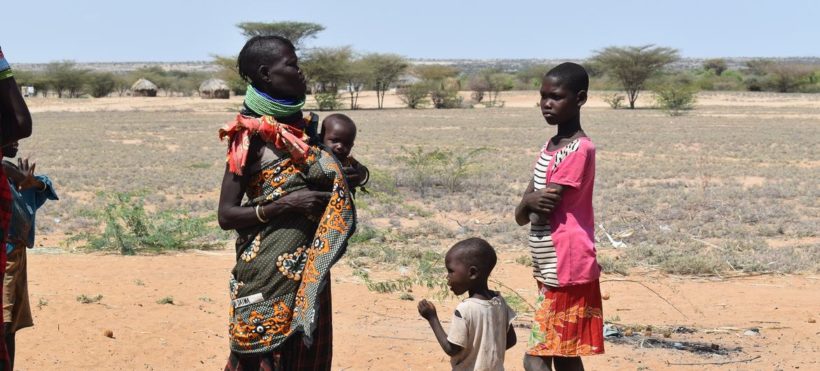Fifteen million people are currently suffering from water shortages, which are expected to reach 20 million soon. Humanitarian organisations continue to call for increased aid to the region.
The drought in the Horn of Africa, the worst in 40 years, has already affected more than 15 million people in Ethiopia, Somalia and Kenya.
The water shortages come afterwards four consecutive failed rainy seasons, and there are fears that the figure could rise to 20 million if the current below-average rains fail again.
UN emergency relief coordinator Martin Griffiths warned of the impact the drought has had on the food security of people in the region and the need for an immediate response.
He was in the region last week on a two-day mission to Kenya to raise awareness of the climate-induced emergency, which comes at a time when the world’s attention is focused on numerous crises.
Last month, he released $12 million from the UN’s Central Emergency Response Fund (CERF) to respond to the emergency, while a further $17 million was allocated from Ethiopia’s Humanitarian Fund.
Families in destitution
Martin Griffiths was in the remote Turkana County in northern Kenya on Thursday to show solidarity with local communities and underline the need for more funding and food aid.
The UN and its partners are appealing for $480 million to support the humanitarian response in the Horn of Africa until October.
“The world’s attention is elsewhere, and we know that,” he said. “But the misery of the world has not left Turkana. The rains have not come to Turkana.”
Griffiths spoke to families in Lomoputh who have nothing left. Their animals have died and they have no resources to generate income.
Impossible options
Although the children can sometimes get food at school, often the only food they get, they need to walk six kilometres to get water and they have to carry it themselves.
So, mothers are forced to make “impossible choices,” she said, before explaining:
“Some have children who are of secondary school age. However, to pay school fees in this area, they have to sell cattle. To do that, families have to sell a goat… But there are no more goats. There are no more cattle. They are gone.”
Malnutrition and migration
Some 3.5 million people in Kenya are severely food insecure and acute malnutrition rates in some areas are more than double the emergency threshold, according to the UN Office for the Coordination of Humanitarian Affairs (OCHA) office, which Griffiths heads.
In the three countries, approximately 5.7 million children are severely malnourished. In addition, more than three million livestock, on which pastoralist families depend for their livelihoods and survival, have died.
Griffiths concluded his mission to Kenya on Friday and met virtually with people in the Somali region of Ethiopia.
The severe drought is affecting more than eight million people across the country. More than 7.2 million are in need of food aid and some four million are in need of water assistance.
At least 286,000 people have migrated in search of water, pasture or assistance, but others, often elderly or sick, have been left behind.
In a Twitter post, Griffiths urged the international community not to ignore the rapidly escalating crisis in the Horn of Africa.
“We need urgent action to help these communities survive now, and greater investment in their capacity to withstand future shocks,” he wrote. We need to secure a future for them,” he added.






